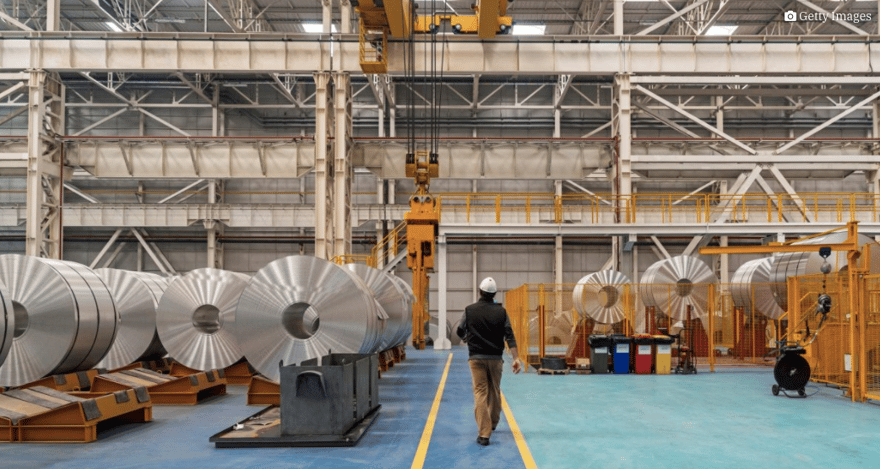The SaaS market is taking off. Sometimes it resembles the rapid growth that the traditional manufacturing industry enjoyed during the industrial revolution. Just have a look at the charts of the two time periods below. The variables and time periods are different, but the trend lines are the same. The main difference is that the chart on the left (growth in the industrial revolution) is in the past, and SaaS growth is happening right now. This offers perspective.
There are many parties that are taking advantage of this rapid growth on the SaaS market. Various venture capitalists are investing hefty sums into promising SaaS products (as well as in PaaS, IaaS and related assets sold ‘as-a-Service’). This is almost exactly like the industrial revolution, which saw the advent of a whole slew of new technologies.
In this article, I will not focus so much on comparing the variables and trends of these markets. Rather, I will look at what we can learn from each other, and especially what the manufacturing industry can learn from what worked for it in the past. Namely: entering new markets with fast-paced new technologies and entrepreneurial risk.
New technology, new markets
Daimler’s development of the internal combustion engine in 1885 laid the groundwork for the success of what we still know as one of the world’s strongest brands: Mercedes. Austrian Emil Jellinek played a catalysing role in this. He had an eye for the market, and asked Daimler to build 36 cars for him after he won a prestigious race with a Daimler car in Nice. He participated in that race under the team name ‘Mercedes’ (after his daughter), which was how Mercedes gained a name and more importantly, fame.
With clever marketing (the fame) and sales (the name), he managed to sell these 36 cars before they were even built. Things moved quickly after that, and the stage was set for the Mercedes as we know it today. At its core, it was a mix of technology (the car), capital, marketing and sales. And we still see this same mix today at SaaS companies. But unlike the capital-intensive manufacturing industry, the software industry actually dedicates a great deal of capital to sales and marketing. The manufacturing industry remains well behind the game in this respect. Even though opportunities on the market are not actually any different. It’s an odd situation.
Half of expenditures on sales and marketing
Various studies amongst SaaS companies paint a picture of massive efforts in sales and marketing. Sales and marketing account for 20% to as much as 80% of expenditure. On average, this figure comes to around 50% of the total budget. Just look at companies like Salesforce and HubSpot.
Salesforce’s 2020 annual report indicates that 46% of total turnover went to sales and marketing. And with Hubspot, we see a similar figure of 50% in 2019. These investments served them well, given their growth in turnover and profitability in recent quarters.
The budgets are so big because you have to move relatively quickly to get a share of the market. This ‘have to’ mentality mainly stems from the ambitions of the original founders/inventors. These ambitions must be backed by funds, which creates additional pressure. But this is no big deal. Because putting effort into sales and marketing will help you grow.
SaaS companies can do this as well because the cost-price per product is extremely low, and they don’t have to invest their capital in costly and capital-intensive production processes, materials or inventory. After all, software can be replicated with the push of a button. The difference in cost to keep one HubSpot suite up and running compared to 1,000 suites is relatively negligible. It just takes a bit more server space/bandwidth. So if a SaaS product is a hit on the market, it will also be extremely profitable. Manufacturing companies often make major investments in acquisitions and further growth and development. Nevertheless, this is no excuse for these companies to stop investing in their commercial teams.
What can the manufacturing industry learn from SaaS: three insights
In addition to the above, I believe some further insights around growth are also useful to manufacturing firms. Assuming growth is the goal, of course. Fortunately, we are increasingly seeing these growth ambitions as newer/younger members join management teams. Encouraged in part by investors driven by financial interests.
Technology and customer-focus
The main focus of the manufacturing industry is internal, on products/technology. It is mostly occupied with technological innovation. This focus stems from the fact that they already have several successful products, which they want to improve. So they have 1,000 good ideas, but only need 100, and only 10 make it across the finish line. This is because innovation is not necessary. The thinking often goes: ‘things are still going well, turnover has been excellent, as has profitability.’ Tech-oriented people are often less concerned with valorizing and marketing the technology.
A more market and customer-oriented approach could be a major boon to the further growth of these companies. If you build your business model around customer and market models, your organisation will be faced with new demands. This means you’ll need the right kind of business developers and engineers. So don’t appoint techies as business developers. That’s just silly. Instead, hire a COO from the SaaS sector and have them reshape your commercial team.
Entrepreneurship
Many manufacturing firms are highly specialised in niche markets. This is because the founder had the technical knowledge to see the gap in the market. These founders often stay involved and move their top people – who got in on the ground floor and often have technical backgrounds – to management positions. There’s nothing wrong with this, and it often goes quite well. But the drive and ambition from 20 or 30 years ago is no longer there, and growth trails off. They do in fact keep developing, but in a sense they’ve already made it, and they increasingly shift from entrepreneurship to management.
So, for instance, in addition to the parent company, it may be wise to deploy a good idea elsewhere and float it as a start-up. Or in any case to allocate the resources and authorisations as you would in a start-up. ASML didn’t actually take off until they left the Philips umbrella. And don’t think things will be any different for your company just because you take on one or two young, digitally minded commercial team members. Not a chance. They’ll stall out after a few months and quickly look for other jobs. Then you’ll say ‘it can’t work for us: better to stick to what we know’. But then you really know the limits of your ambition.
Closed chain in a niche market
Parties in the manufacturing industry know each other. This is because it’s often a complex chain of OEMs and their suppliers. They need each other, and are in close company, as it were. They find each other in closed circles and on (often niche) exchanges. ‘We know our circle and we know how it works, so we don’t need any website, social media or digital sales. We just call each other.’ I’ve heard that line more than once. It’s great that it works, but I am convinced that other approaches will work even better. It’s not an either/or situation.
So yes, it’s great if you’ve found your niche in the closed chain or specialised market, but it also makes you vulnerable. So broaden your focus to multiple target groups/markets and take the time to find out where else your technology can be deployed. This process will not meet with success as quickly or as easily with the same people and ideas you’ve had all along.
So try acting like a SaaS company and dedicate far more to your commercial process. Do this through new models, with new people and new types of organisations. This will ensure potentially exponential growth, even in manufacturing.



